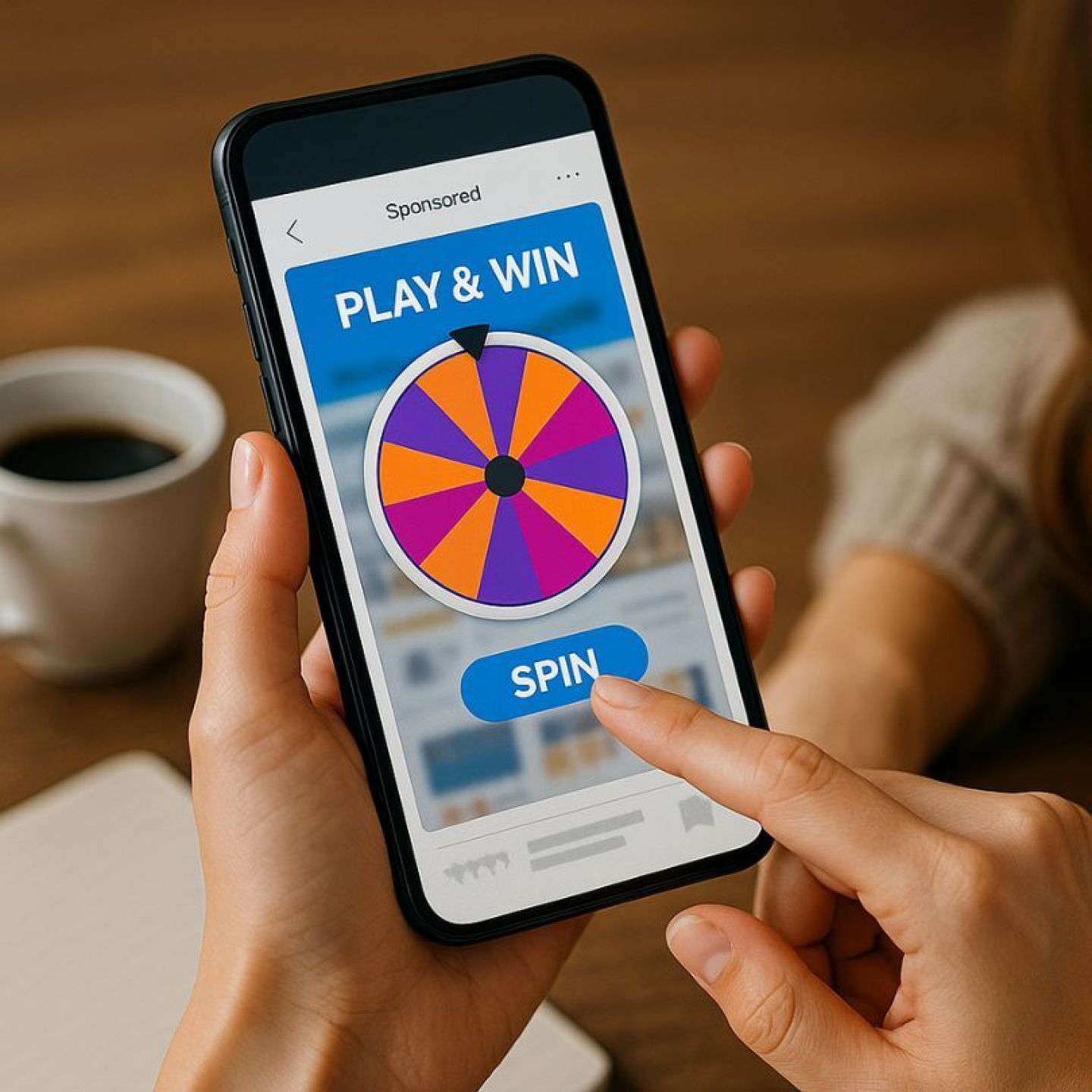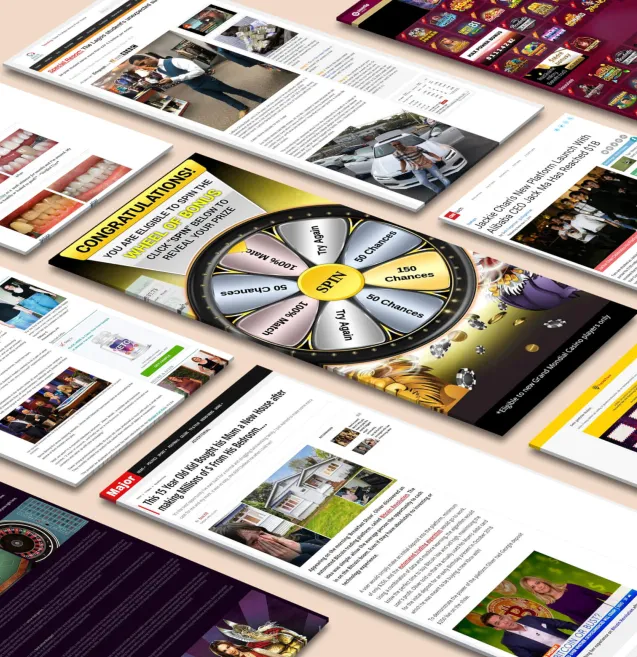
Our spy tools monitor millions of native ads from over 60+ countries and thousands of publishers.
Get StartedIn today's digital world, traditional advertising struggles to grab people's attention. That's where gamified native content comes in - an innovative approach that turns boring ad experiences into interactive ones. This groundbreaking marketing strategy seamlessly blends game elements into branded content, creating immersive experiences that users actively seek out.
Gamified native content combines:
Ad engagement sits at the heart of successful digital marketing campaigns. When users actively participate in your advertising content, they form deeper connections with your brand and retain information more effectively.
The magic of gamification in native advertising lies in its ability to make advertising feel less like a sales pitch and more like entertainment. Users willingly spend time with your brand, clicking, swiping, and playing their way through content that subtly communicates your marketing message. This natural integration leads to higher engagement rates, better brand recall, and increased conversion potential.
As we look towards the future of marketing, understanding emerging trends is crucial. For instance, 10 viral products Gen Z can't get enough of in 2025 could provide valuable insights into how to tailor gamified native content to resonate with younger audiences.
Gamification in marketing transforms traditional advertising approaches into interactive experiences that captivate and engage users. This strategy incorporates game design elements into marketing campaigns, creating a dynamic environment where users actively participate rather than passively consume content.
Native advertising, such as those offered by platforms like Anstrex, takes these gaming mechanics to create seamless, non-disruptive experiences that blend naturally with platform content. A quiz about healthy eating habits on a wellness website, for instance, can subtly incorporate brand messaging while providing value to users.
Traditional ads push messages at audiences, while gamified native content pulls users into an experience. Users spend 47% more time interacting with gamified ads compared to static alternatives. The interactive nature of these campaigns creates a two-way dialogue between brands and consumers, fostering deeper engagement and meaningful connections.
This shift from passive to active engagement represents a fundamental change in how brands connect with their target audience. Gamified elements create memorable experiences that users actively seek out and share with others. Notably, the principles of gamification are not limited to marketing alone; they can also be effectively applied in other fields such as eLearning. For instance, gamification in eLearning has shown significant potential in making training engaging and effective by using stories, challenges, and rewards.
Gamified native advertising creates a win-win situation for both brands and consumers through measurable results and enhanced user experiences.
Recent case studies demonstrate the power of gamified content. Wendy's innovative swipe-to-match game featuring real menu items achieved:
Users who engage with gamified content show stronger brand affinity:
Gamified native ads tap into fundamental human psychology:
The psychological impact of gamified content extends beyond immediate interaction. Users develop lasting emotional connections through:
These emotional bonds translate into tangible business results, with gamified native advertising showing 2-3x higher conversion rates compared to traditional display ads.
Playable ads are a powerful tool in gamified native content, allowing users to interact directly with brand messages. These immersive experiences enable users to try out products or services through mini-games. Candy Crush was the first to use this method by letting players experience actual gameplay within ads, resulting in a 32% increase in user acquisition.
Quizzes and polls are highly effective in engaging users because they tap into people's natural curiosity and desire for self-discovery. Beauty brands like Sephora use personality quizzes to recommend personalized products, while news organizations implement interactive polls to boost reader participation.
Rich multimedia elements enhance the gamified experience:
These elements work together to create multi-sensory experiences. Leading brands combine audio-visual feedback with interactive mechanics to reward user actions. Nike's SNKRS app integrates AR features with gamified elements, allowing users to unlock exclusive product drops through interactive challenges.
The key to successful implementation lies in balancing entertainment with brand messaging. Your gamified content should maintain core brand values while delivering engaging gameplay mechanics that resonate with target audiences.
AR native ads represent the next evolution in gamified advertising, blending digital content with the physical world through smartphone cameras. These immersive experiences allow users to interact with branded elements in their real environment, creating unique and memorable engagement opportunities.
AR native advertising transforms standard marketing messages into interactive adventures. IKEA's AR app lets users visualize furniture in their homes, while Sephora's Virtual Artist enables customers to test makeup looks instantly. These applications drive engagement by providing practical value alongside entertainment.
The benefits of AR native ads extend beyond novelty:
AR technology creates a bridge between digital advertising and physical experiences, offering brands new ways to showcase products and tell stories through interactive, user-controlled environments.
Mobile optimization is crucial for the success of gamified native advertising. Your campaigns need to provide smooth experiences on various screen sizes and device capabilities. Here are the key elements to focus on for optimization:
Banner blindness is another major challenge in digital advertising. Users have become adept at ignoring traditional ad formats, but gamified native content can overcome this obstacle. Studies indicate that interactive formats grab 66% more attention compared to static ads.
To gauge the effectiveness of your gamified campaigns, consider these metrics:
Real-time analytics enable you to monitor these metrics and enhance campaign performance. By conducting A/B tests on different game mechanics, reward systems, and interactive elements, you can discover what resonates most with your target audience.
Gamified native content represents a major shift in digital advertising. Users no longer scroll past ads - they play with them. This change from passive viewing to active participation creates lasting brand memories and meaningful connections.
The rise of interactive native content signals a new era where:
Your audience wants to be part of the story. Gamified native content puts them in the driver's seat, turning every ad interaction into an experience worth remembering. As technology evolves and attention spans shrink, brands that master this interactive approach will win the battle for user engagement.
The future of advertising isn't about talking at your audience - it's about playing with them.
Receive top converting landing pages in your inbox every week from us.
How-To
Native ads can do more than drive clicks—they can build long-term brand loyalty. Learn how to use authentic storytelling, strategic placement, and audience targeting to strengthen trust during year-end campaigns. Discover how subtle, value-driven messaging keeps customers engaged beyond the holidays. Ideal for marketers aiming to turn seasonal buyers into loyal brand advocates.
Marcus Chen
7 minDec 15, 2025
Must Read
As third-party cookies fade away, contextual targeting is making a powerful comeback. Learn how to leverage native ads that align with user intent and content relevance to maintain high engagement and conversions. Discover modern tools and tactics that make cookie-free targeting both precise and scalable. Ideal for advertisers seeking privacy-friendly ways to drive performance in 2025 and beyond.
Liam O’Connor
7 minDec 9, 2025
Recently Updated
Native ads can make or break your holiday marketing success. Explore how to evaluate your recent campaigns and identify what worked—or what fell short—with native advertising. Learn key optimization tactics to boost engagement, strengthen audience trust, and increase conversions in future promotions. Ideal for marketers aiming to refine their ad strategies after the holiday rush.
Elena Morales
7 minDec 1, 2025




